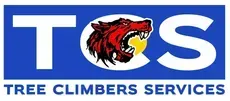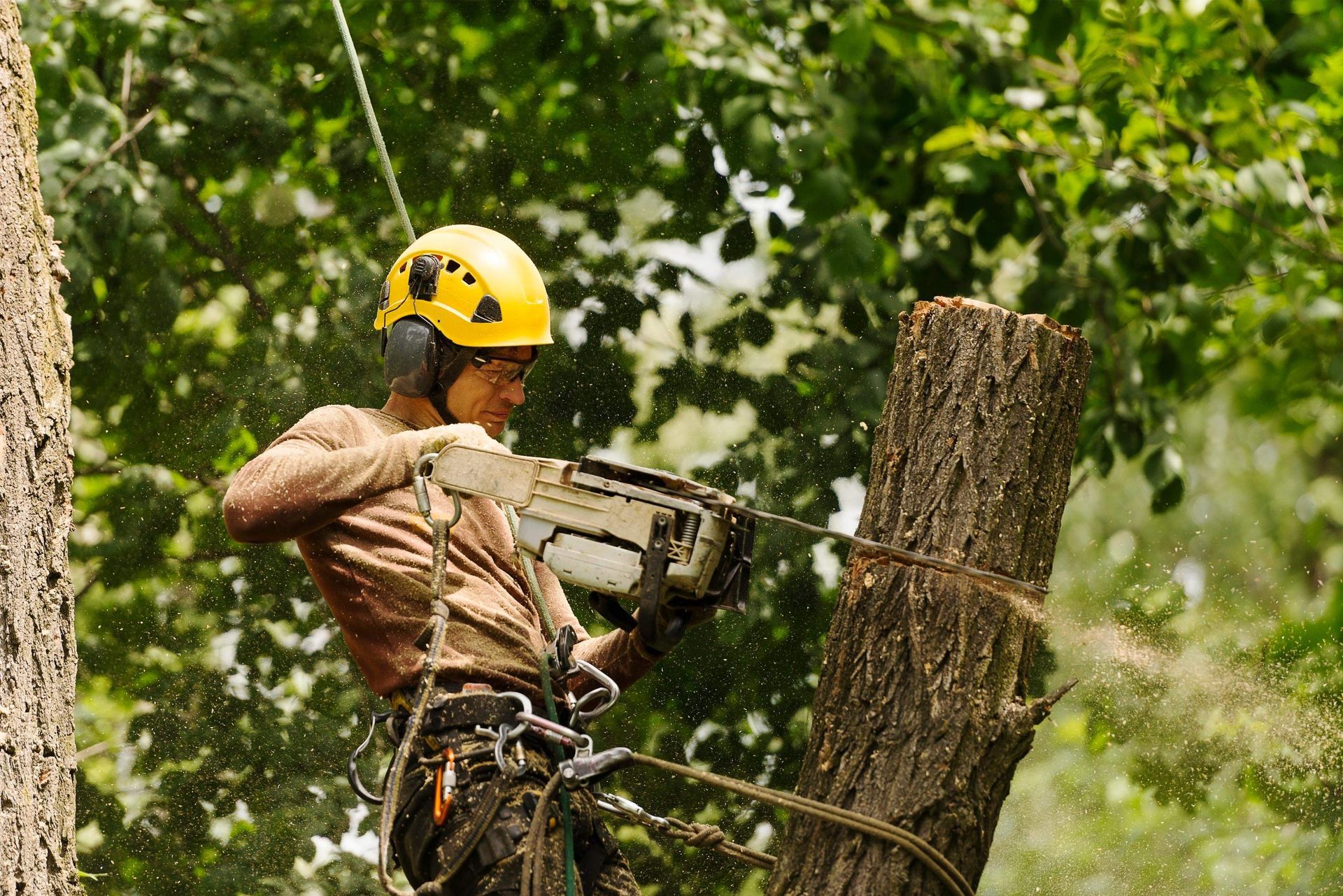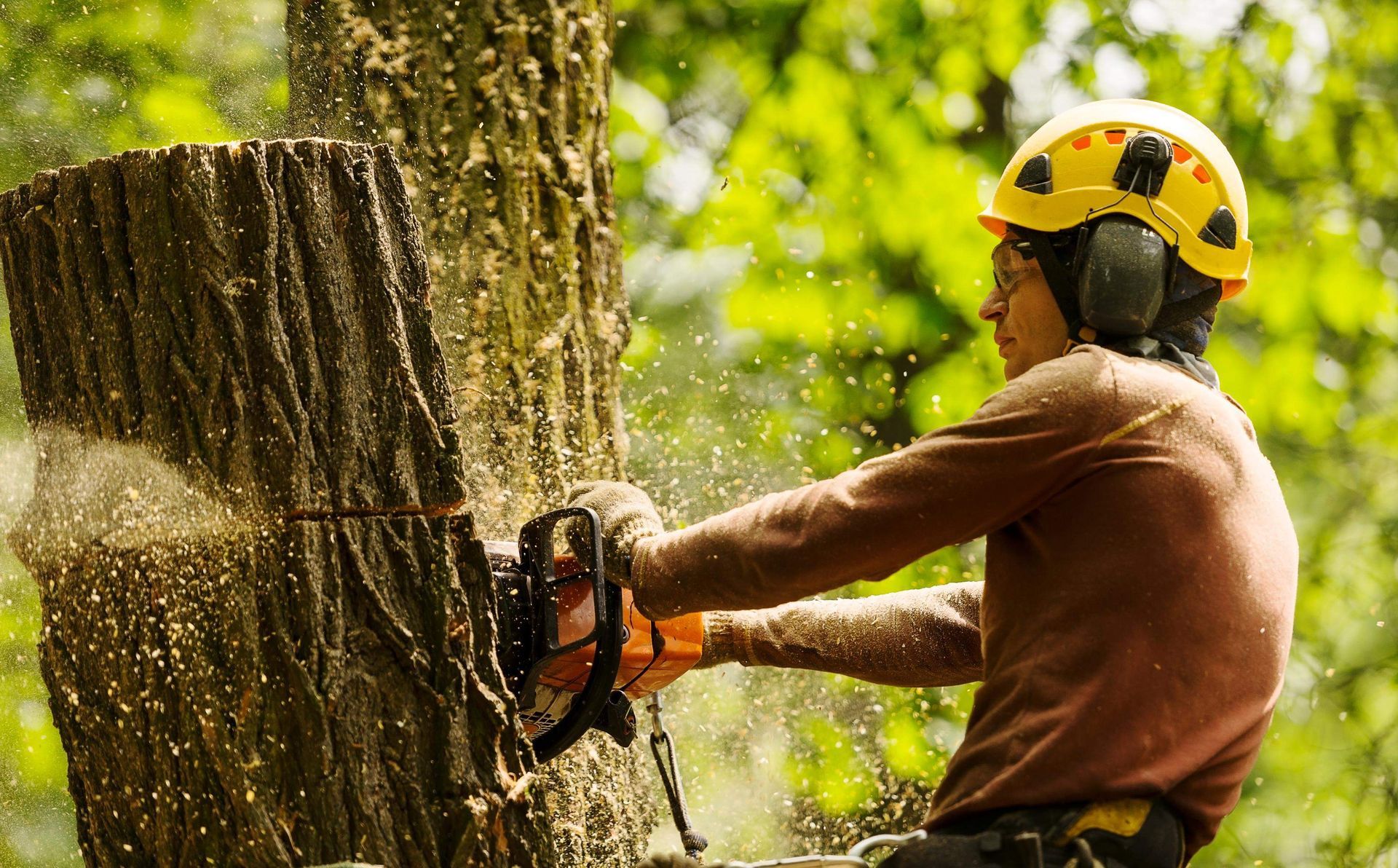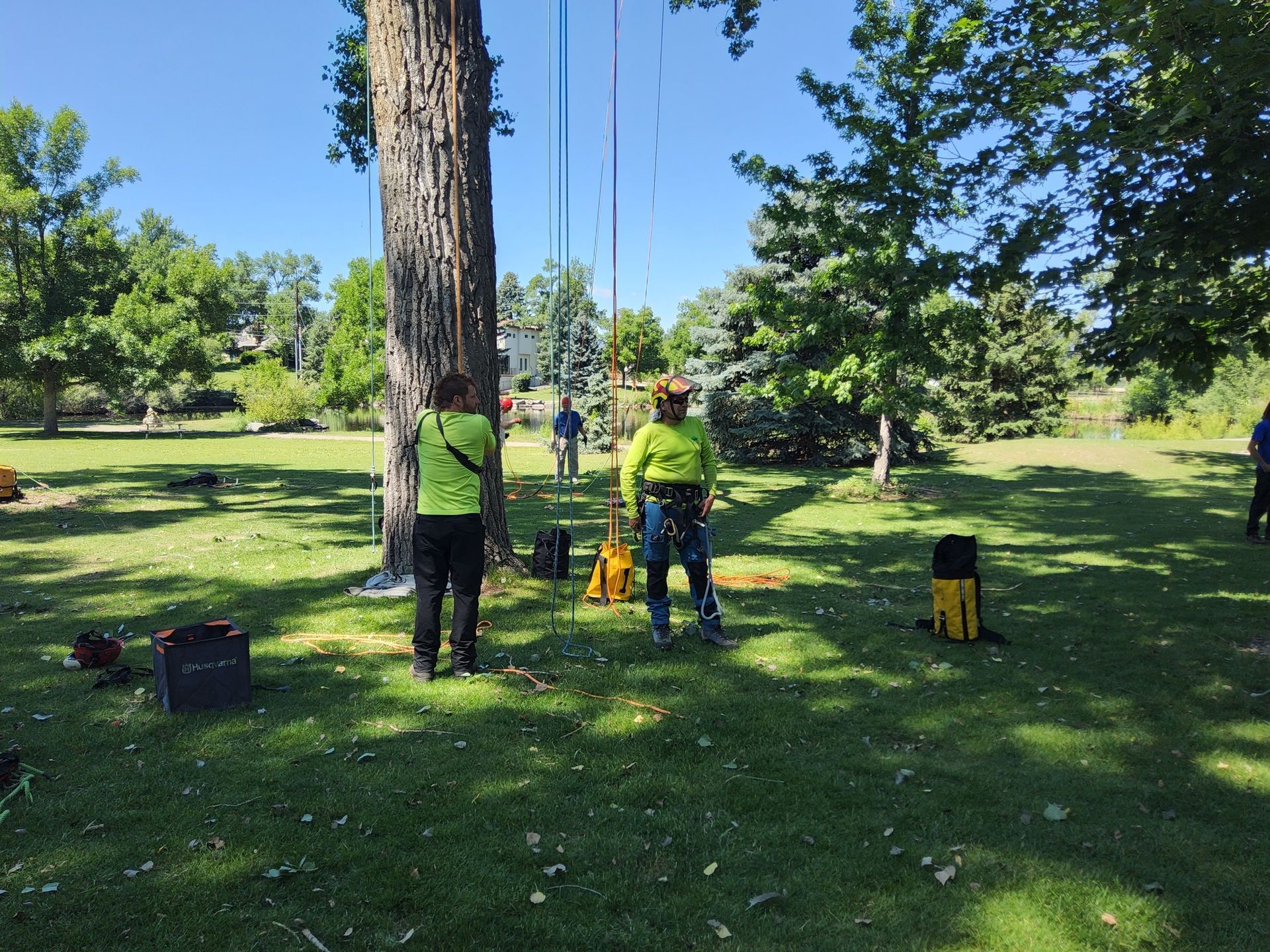What You Need to Know About Safe Tree Removal Near Power Lines
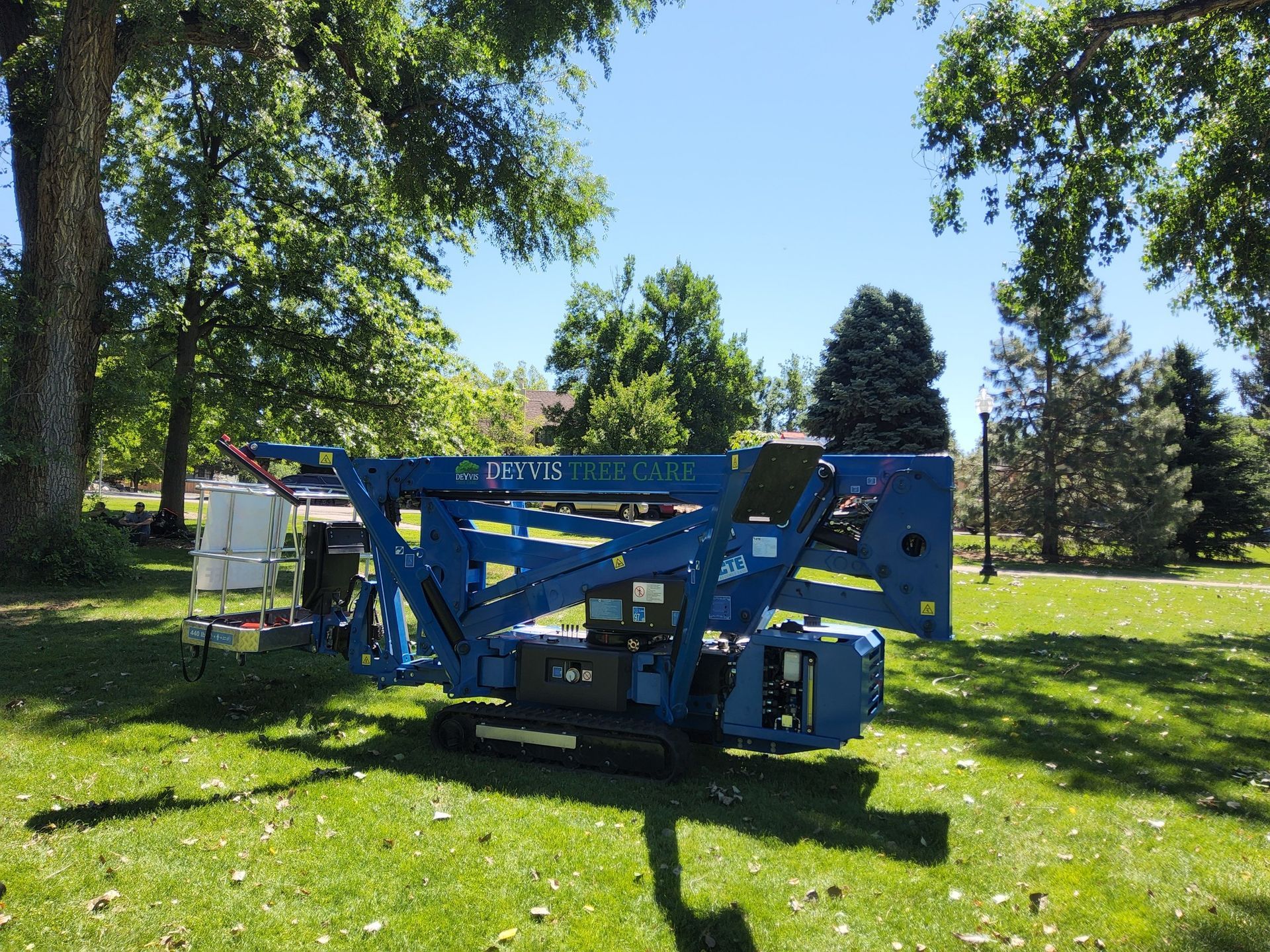
Table of Contents
- The Real Dangers of Trees Growing Near Power Lines
- How Tree Removal Near Power Lines Works
- Understanding Utility Line Clearance Rules
- Why Homeowners Shouldn’t DIY This Job
- How We Handle Tree Removal Safely and Professionally
- What to Expect During a Tree Removal Project
- Permits, Coordination, and Legal Steps You Should Know
- Mistakes We’ve Seen Homeowners Make (and How to Avoid Them)
- Preparing Your Property Before We Arrive
Key Takeaways
- Tree removal near power lines is never a DIY task—it’s a high-risk operation that demands professional expertise.
- Only a professional tree service understands how to manage live wires, clearances, and legal requirements.
- Colorado regulations on utility line clearance are strict for a reason—violations can cause outages or injuries.
The Real Dangers of Trees Growing Near Power Lines
We’ve seen it more times than we can count—a tree planted decades ago that’s now brushing dangerously close to overhead wires. It doesn’t take much. One strong gust of wind, a lightning strike, or even a squirrel running along a branch can cause electrical arcing and start a fire.
That’s why tree removal near power lines isn’t just another weekend project—it’s serious work that needs a professional’s touch. If you’re unsure about how close your trees are to power lines, it’s best to call Tree Climbers Services for an inspection before a small problem becomes a dangerous one.
From our experience, people often underestimate how far electricity can jump. You don’t have to physically touch a line for it to strike. The current can travel through a saw, an aluminum ladder, or even a wet tree branch. We’ve responded to calls where homeowners tried trimming just “a few small limbs” and ended up knocking out power to half their block—or worse, getting seriously injured.
It’s not worth the risk. Electricity doesn’t give second chances.
How Tree Removal Near Power Lines Works
Removing a tree near power lines isn’t as simple as cutting and hauling. It’s a coordinated operation that combines utility line clearance, safety planning, and skilled rigging.
Before we ever fire up a chainsaw, we do a full site assessment. We look at how close the tree is to energized wires, the direction it leans, and how stable the ground is. If a power company needs to temporarily shut down a section of the line, we handle that coordination.
We also determine what equipment is safest for the job—sometimes a bucket truck or aerial lift is necessary; other times we climb using rope systems to control every cut. Every move is deliberate. Each limb is lowered by rope, piece by piece, to avoid contact with the lines or nearby structures.
We’re not just cutting wood—we’re managing potential energy, gravity, and voltage at the same time.
Understanding Utility Line Clearance Rules
Colorado has specific guidelines for utility line clearance, and they exist for good reason. Depending on the voltage, there’s a minimum distance that must be maintained between vegetation and live electrical conductors.
Utility companies often conduct regular inspections, and they can issue warnings or even fines if trees on your property are too close. But compliance isn’t just about following rules—it’s about keeping your neighborhood safe.
When we perform tree removal near power lines, we make sure all clearances are met and documented. This ensures your property meets utility safety standards and reduces the risk of outages or electrical fires.
We also stay updated on local ordinances and utility agreements, so you don’t have to navigate that red tape yourself.
Why Homeowners Shouldn’t DIY This Job
We understand the temptation. Maybe you’ve handled your own tree trimming for years, and it’s always gone fine. But when power lines are involved, it’s a completely different scenario.
We once had a client in Grand Junction who decided to prune a few limbs hanging near the street. The branch swung into a secondary power line and sparked on contact. Fortunately, no one was hurt—but the resulting fire scorched the side of their garage before the fire department arrived.
DIY efforts near energized lines are not only unsafe—they’re illegal in many cases. Homeowners are prohibited from performing any work within ten feet of power lines. Only qualified professional tree service providers can legally do so.
If the risk of electrocution isn’t enough, consider liability. If a limb you cut damages a utility line or knocks out service, you could be responsible for repairs costing thousands.
It’s simply not worth the gamble.
How We Handle Tree Removal Safely and Professionally
At Tree Climbers Services, we take a safety-first approach every single time. We start by contacting the utility provider to confirm line voltage and clearance requirements. Then, we plan the removal in stages—starting with the outer branches and working inward toward the trunk.
Every member of our crew is trained and certified to handle tree removal near power lines. We use insulated tools, proper grounding methods, and specialized climbing gear designed for electrical proximity work.
For large or hazardous trees, we sometimes use cranes or aerial lifts to remove sections safely from above. The goal is to maintain total control over each cut, minimizing any chance of contact with live wires or structures below.
We also bring in ground crews to manage debris, monitor clearances, and ensure communication between climbers and operators. It’s a well-coordinated dance that comes from years of experience and respect for the dangers involved.
What to Expect During a Tree Removal Project
When you call us for an inspection, we start by walking your property with you. We’ll identify the trees posing the highest risk and explain your options. If removal is necessary, we’ll outline the steps clearly—no surprises, no upsells.
Depending on the tree’s height, location, and the voltage of nearby lines, the process may take a few hours to a full day. Our goal is to leave your property safe, clean, and clear of any potential hazards.
We also handle stump removal and cleanup so you’re not left with debris. If replanting is part of your plan, we can help you choose safer locations and tree species that won’t cause problems in the future.
Permits, Coordination, and Legal Steps You Should Know
A lot of homeowners are surprised to learn that tree removal near power lines sometimes requires permits. In Colorado, local municipalities may have rules about which trees can be removed—especially if they’re near public right-of-ways or utility corridors.
We take care of all of that. Before any work begins, we contact the appropriate city offices and coordinate with the utility provider. This not only ensures compliance but also keeps you protected from potential fines or disputes. Utility companies appreciate when professionals handle the communication—it streamlines their process and prevents service interruptions for nearby residents.
Mistakes We’ve Seen Homeowners Make (and How to Avoid Them)
Over the years, we’ve seen just about every mistake possible. The most common one? Waiting too long. Trees don’t stop growing, and by the time branches are touching a line, it’s already a serious problem.
Another common error is hiring an unqualified contractor. Not every company is licensed for utility line clearance or electrical-proximity tree work. Always check for proper licensing and insurance coverage.
We’ve also seen homeowners assume their utility company will handle everything for free. While power companies do perform routine line clearance, they typically focus only on lines feeding multiple properties—not individual service lines to your home.
The takeaway: act early, hire the right professionals, and don’t rely on assumptions when safety is on the line.
Preparing Your Property Before We Arrive
You don’t have to do much before we arrive, but there are a few helpful steps you can take. Clear your driveway and any nearby walkways so our trucks and lifts can access the work area. Move vehicles, outdoor furniture, or decorations that might be in the way.
If you have pets, we recommend keeping them indoors while we work. Tree removal near power lines can get noisy, and we want everyone—two-legged or four-legged—to stay safe.
We’ll handle the rest. From site setup to final cleanup, our team takes care of every detail so you can relax knowing your property is in capable hands.
Reach out to
Tree Climbers Services or contact us at
(970) 589-2268 /
joshua@treeclimbersservices.com for safe, efficient help.
Frequently Asked Questions
What makes professional stump grinding safer than DIY removal?
We’ve found that professional stump grinding uses specialized equipment, minimizing injury risks and ensuring complete removal. DIY attempts can be labor-intensive and dangerous, while our services give clients a safe, clean yard without the hassle.
How do stump removal services contribute to healthier soil?
By grinding stumps, we turn leftover wood into nutrient-rich mulch. This naturally enriches the soil, promotes stronger grass and plants, and helps our clients maintain a thriving landscape for years to come.
Can stump removal really prevent termite and ant problems?
Yes! Removing stumps eliminates moist, decaying wood where pests thrive. We’ve helped clients prevent termite and ant infestations, keeping their gardens, trees, and even homes safe from damage.
Is professional stump grinding effective for large or old stumps?
Definitely. We can handle stumps of any size or age with our equipment. Our professional stump grinding ensures complete removal, unlike DIY methods that often leave stubborn roots behind.
What other benefits do we see from regular stump removal services?
We notice safer yards, cleaner landscapes, improved soil, and more usable space for gardens or patios. Regular stump removal also helps our clients avoid pest infestations, fungal growth, and potential tripping hazards.
